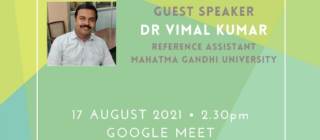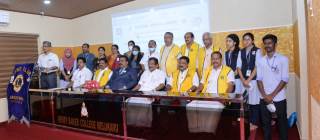Physics in Daily Life
Course Overview:
This course is intended for students of disciplines other than Physics. The prerequisite of this course is the secondary level of knowledge in mathematics and physics. Through this course, students can appreciate their surroundings by understanding the basic rules of Nature and able to connect some daily life observations to Physics principles.
- Duration: 72 hours
- Credit: 3
Course Layout
- Unit 1: Units, Dimensions and Errors
- Unit 2: Light
- Unit 3: Motion
- Unit 4: Electricity
- Unit 5: Matter and Energy
- Unit 6: Universe
Module I
Unit 1 (8 hours)
- Fundamental and derived quantities. Units and dimensions, dimensional analysis, order of magnitude, significant figures, errors.
Unit 2 Light (12 Hours)
- Reflection, refraction, diffraction, interference, scattering(elementary ideas only) – examples from daily life – apparent depth, blue color of sky, twinkling of stars.
- Total internal reflection, mirage, sparkling of diamond, primary and secondary rainbow – optical fibres. Concave and convex mirrors, lenses – focal length, power of a lens, refractive index, prism, dispersion. Human eye, defects of the eye – myopia, hypermetropia, presbyopia and astigmatism and their correction by lens.
Module II
Unit 3 Motion (12 Hours)
- Velocity, acceleration, momentum, Idea of inertia, force - laws of motion. Newton’s law of gravitation, acceleration due to gravity, mass and weight, apparent weight, weightlessness.
- Rotational motion, Moment of inertia, torque, centripetal and centrifugal acceleration examples- banking of curves, centrifugal pump, roller coasters.
Unit 4 Electricity (10 Hours)
- Voltage and current, ohms law. Electric energy, electric power, calculation of energy requirement of electric appliances – transformer, generator, hydroelectric power generation – wind power – solar power – nuclear power
Module III
Unit 5 Matter and energy (18 Hours)
- Different phases of matter, fluids - surface tension, viscosity- capillary rise, Bernoulli’s theorem and applications.
- Heat energy, temperature, different temperature scales – degree Celsius, Fahrenheit and Kelvin.
- Waves – transverse and longitudinal waves, sound waves, Doppler Effect.
- Lasers, fluorescence, phosphorescence, electromagnetic waves – applications – microwave oven, radar, super conductivity.
Unit 6 Universe (12 hours)
- Planets, – solar system, moon- faces of moon, lunar and solar eclipses, constellations, Different types of stars, Galaxies, black hole. Satellites, Artificial satellites, Global positioning system. Geo stationary satellite.
Reference Texts
- Fundamentals of Physics with Applications by Arthur Beiser
- Conceptual Physics by Paul G Hewitt



